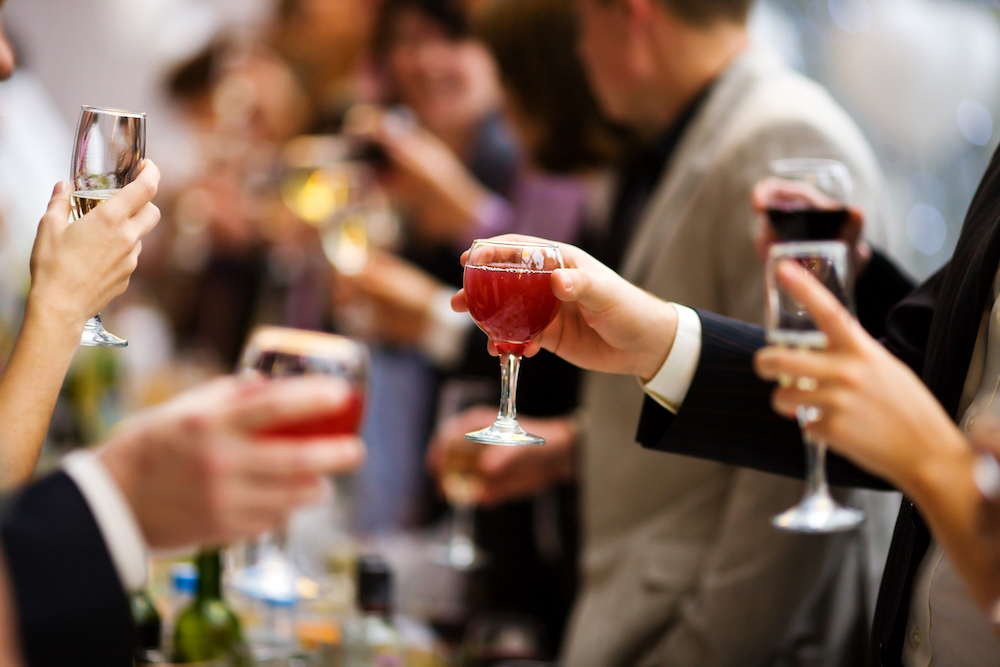“Being very well-rested is important. In fact, they’ve done studies that people with sleep fatigue or lack of sleep are more dangerous or as dangerous than people who are intoxicated and driving,” according to Dr. Ross Tobleman, Emergency Physician.
Two to three times more people die in alcohol-related crashes during Christmas and New Year’s than during comparable periods the rest of the year, according to the National Highway Traffic Safety Administration.
Dr. Tobleman adds that outside the immediate danger – lack of sleep could impact your immune system, making you more susceptible to sickness. And it is flu season, after all. So, make sure you’ve gotten your flu vaccine.
If you do choose to drink and partake in the festivities, Dr. Tobleman suggests eating a well- balanced meal beforehand. And once you are out, pace yourself.
A good rule of thumb is one drink an hour, and you should intersperse that drink with a glass of water. So for every drink, every alcoholic drink that you have – whether it’s a beer, wine, a shot of whiskey, or a mixed drink, that you drink one glass of water to go with that. This way, you don’t get dehydrated, you make sure you’re maintaining your hydration and that way you don’t get inebriated as well, explains Dr. Tobleman.
“Being very well-rested is important. In fact, they’ve done studies that people with sleep fatigue or lack of sleep are more dangerous or as dangerous than people who are intoxicated and driving” -Dr. Ross Tobleman, Emergency Physician.
Champagne Cork Injuries – You can avoid eye injuries if you follow the advice of the American Academy of Ophthalmology and remember the number 45. That is, you should chill your champagne to at least 45°F, as this will make the cork less likely to pop out unexpectedly, and you should hold the bottle at a 45-degree angle, pointing it away from yourself and others. Then, after removing the wire hood, place a towel over the top of the bottle and grasp the cork. With the bottle in one hand, slowly twist the cork, applying gentle upward pressure. When you feel the cork about to pop out, reverse pressure to a slight downward tilt.
Fireworks – When it comes to explosives, follow the same rules on New Year’s Eve that you would any other time of the year: Leave it to the professionals. The best way to enjoy fireworks is to watch a public exhibition from a safe distance. If you feel you must light your own fireworks never allow children to handle or light any kind of fireworks.
Firearms – It is a tradition for some to shoot firearms up in the air. This is a very bad idea, especially in populated areas as what goes up, must come down.
Walking Safety– New Year’s Day is the deadliest day of the year for pedestrians. A 2005 study in Injury Prevention found that an average of 24 pedestrians are killed on New Year’s Day in the United States, making it the riskiest day of the year for walkers.
Heart Attacks – A study published in Circulation in December 2004 found that heart attacks spike during Christmas and New Year’s. The authors speculated that delays in seeking treatment due to the holidays likely plays a role in the increase.
Black-eyed peas may not bring luck, but they are healthy for you. A common Southern tradition is to eat black-eyed peas to bring luck and good fortune in the new year. While they may not always bring fortune, black-eyed peas and all beans are good for health. They are a good source of fiber, potassium, protein, iron and other nutrients, and bean-eating is associated with lower cholesterol.
*This information is intended for general knowledge and is not a substitute for professional medical advice or treatment.
For more information visit www.sw.org.





Recent Comments